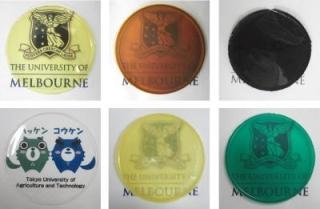Nov 20 2017
In a number of countries carbon dioxide (CO2) capture remains a priority as the world looks to tackle climate change. Particularly, the latest report from the Intergovernmental Panel on Climate Change reveals that geological storage of CO2 is needed for all scenarios that can meet 430 - 550 ppm CO2 atmospheric concentrations (Working Group III, IPCC 5th Assessment Report, 2014).
 Hybrid membranes composed of a polyimide combined with porous nanoparticles including carbons, metal organic frameworks and a porous organic polymer have been evaluated. (CREDIT - Copyright 2017 'Tokyo University of Agriculture and Technology' and 'The University of Melbourne' All rights reserved.)
Hybrid membranes composed of a polyimide combined with porous nanoparticles including carbons, metal organic frameworks and a porous organic polymer have been evaluated. (CREDIT - Copyright 2017 'Tokyo University of Agriculture and Technology' and 'The University of Melbourne' All rights reserved.)
Membrane technology is one approach being studied around the world for the cost-effective capture of CO2. However, to be effective, the membrane materials need high gas permeability and selectivity as well as long-term performance stability. Although a huge number of gas separation membrane materials have been discovered for CO2 capture over the last few decades, most have been analyzed under idyllic conditions. However, real industrial gas streams contain impurities such as water vapor, sulfur dioxide, hydrogen sulfide and nitrogen oxide.
The researchers have explored the resilience of hybrid mixed matrix membranes in the presence of these impurities. They discovered that the hybrid membranes prepared using porous organic polymer nanoparticles were resilient to these impurities, while those having metal organic framework nanoparticles were less stable.
This proves that they can be effective in gas separation applications such as biogas purification, natural gas sweetening and post-combustion carbon capture, when these acidic gases exist. These results will allow engineers and scientists to choose the appropriate materials for these applications.